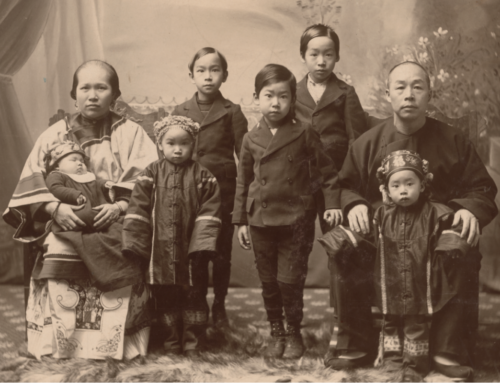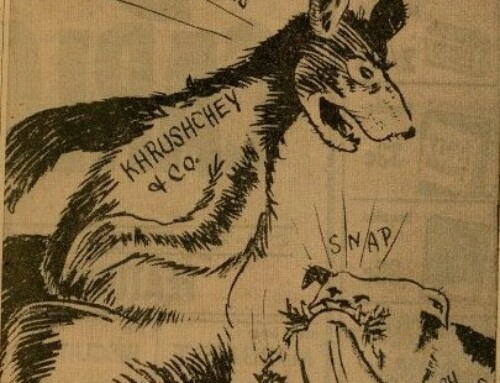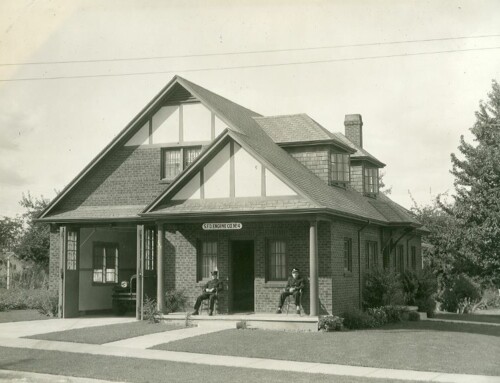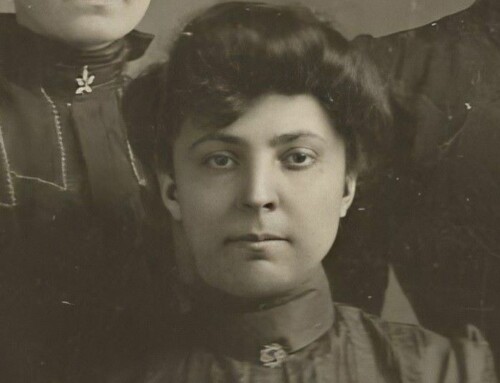There is something so poignant about sifting thru a probate packet at the Oregon State Archives. The remainders of a human life reduced to inventories, bills, and receipts. A funeral director’s bill for services rendered such as a casket and transportation to the train. A midwife’s bill for nursing and delivering a widow’s baby. Both a testament to the cycle of life as we know it. But I’m getting a little ahead of myself.
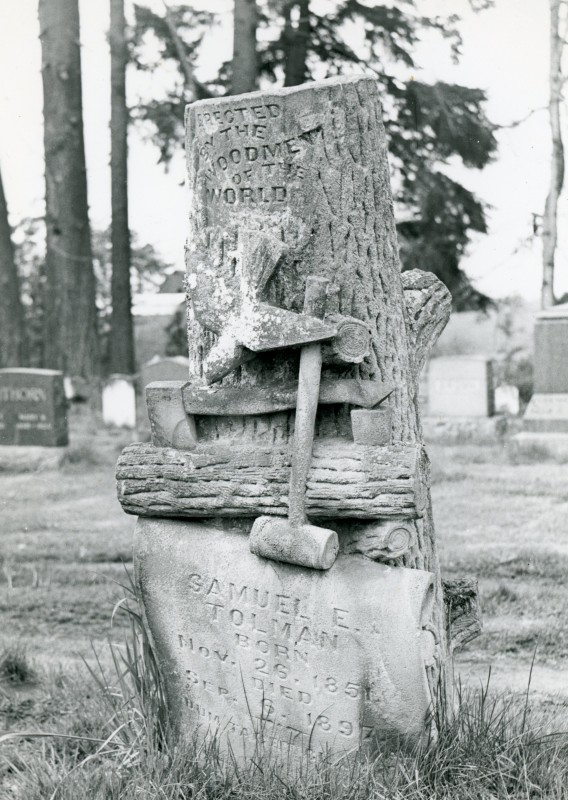
Samuel E. Tolman headstone in Belle Passi Cemetery, Woodburn, Oregon WHC 2011.001.0012
The following story evolved with the discovery of a beautiful headstone in Belle Passi Cemetery in Woodburn, Oregon. The monument is a stone tree stump approximately 4 feet high that bears the emblems of a maul, wedge, axe and dove. Name and dates are inscribed on what resembles a stone scroll of paper. The grave marker belongs to Samuel E. Tolman, November 26, 1851 – September 6, 1897. Hidden in the grass at the bottom of the stone, the Latin motto “Dum Tacet Clamet” which translates to “though silent, he speaks”. The distinctive headstone is representative of the stones provided by the fraternal organization Woodmen of the World to their members. Two basic patterns were available, a tree trunk for adults and three stacked logs for children. To personalize the monuments other decorations could be added such as those on Samuel’s. The stone would have been carved by a local stone carver from a pattern provided by the Woodmen organization.
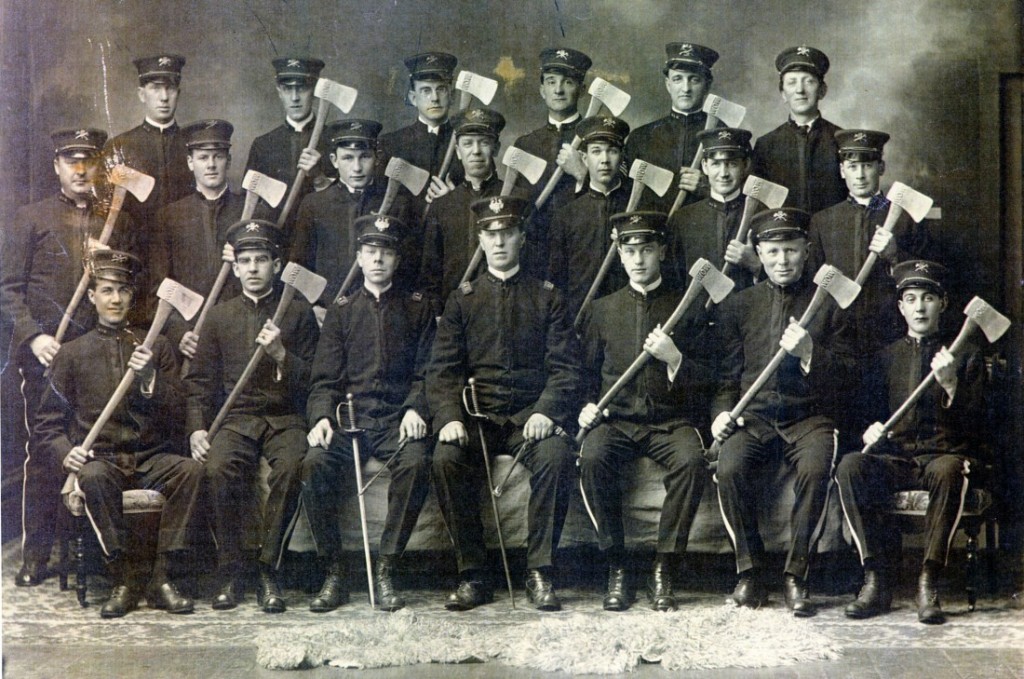
Local chapter of Woodmen of the World WHC 2010.080.0007
The Woodmen of the World (WOW) was founded in the early 1890s in Omaha, Nebraska and quickly spread across the United States to become the largest beneficiary order at the time. By 1901 it was the largest fraternal organization in Oregon with 140 camps and a membership of 15,000. Its founder Joseph Cullen Root inspired by a sermon that used the analogy of woodmen clearing the forest to provide for their families envisioned an organization that would clear away problems of financial security for its members. WOW was known for its rigorous physical test for membership, elaborate rituals that drew upon the forest for inspiration, death benefits of $1000, $2000 or $3000 based on the membership level, and tree-like grave monuments. The grave markers were provided free of charge to deceased woodmen until the mid-1920s when the cost became too prohibitive.
I was curious about the Samuel Tolman headstone in Belle Passi Cemetery. It is the only one of its kind in the cemetery and Samuel is the only Tolman buried there. It seemed odd. Using the limited information I had, his name, death date and the cemetery location I started digging in the census records and city directories. No record of him or any Tolmans in the area. Who was this man and how did he come to be buried in Woodburn? I changed tack, switching to an online newspaper database. Still nothing, so I decided to widen my search area. Given the popularity and ease of train travel in that era I began looking for Tolmans in cities along the north-south rail line between Portland and Salem. In Portland I finally caught a break.
The Historic Oregonian newspaper database provided the shocking headline, “BULLET IN HIS BRAIN – S.E. Tolman, a Portsmouth Grocer, Kills Himself – Despondent Over Troubles, He Chooses a Violent Death – Found in Store”. The article, printed in the September 7, 1897 edition went on to describe the tragic scene discovered by Tolman’s assistant Miss Mina Hoyt when she arrived for work and found her employer lying in a pool of blood. A coroner’s case ensued. Evidence established that Tolman had traveled home to the north Portland neighborhood on Sunday evening, from Woodburn where he had been visiting his wife and children. He was last seen at 8:30 p.m. by Stanley Arnold, a 10-year-old boy from the neighborhood. Stanley testified that they had spoken about hops, then Mr. Tolman lit a lantern and went into his store. Another witness that traveled on the train with Tolman testified that Tolman had confided in him that “he had the blues.” Business was dull and not improving. His wife and children were living in Woodburn caring for his ill mother-in-law. The inquest jury returned a verdict of suicide. Samuel was 45 years old at the time of his death and left a pregnant wife and two small children.
This is how I found myself at the State Archives looking at Samuel’s death certificate and probate papers seeking further information about the man’s life and his family. With further research I discovered that he was born in Massachussetts on November 26, 1851 to parents Samuel and Emma Tolman. He made his way out west to San Francisco, California in his twenties where we find him listed in the California Voter Registration records, then in 1885 he made the move to Portland, Oregon. In 1892 he married Phebe Ann Forbis and opened an store in the Portsmouth neighborhood of north Portland. Stationery found in the probate packet describes the establishment as “S.E. Tolman – dealer in groceries, provisions, notions, school supplies etc.” Three children are born to the couple; Elizabeth in 1893, Nellie in 1896, and William in 1898, nine months after his father’s death.
After Samuel’s tragic end, his wife Phebe and children move around a bit from relative to relative, easily tracked through census records. In 1900 we find her in Walla Walla, Washington with her uncle, J.B. Smith. In 1910 we pick her up in Hood River, Oregon living on her own income with the three children. In 1920 she is back in Woodburn living with her sister Elizabeth Walker. Phebe never remarried.
Unfortunately, the harbinger of death visited the family again. Daughter Elizabeth was taken from them on the eve of her wedding in 1918 from complications following an attack of tonsillitis. Then naval son William in 1924 after a 6 month battle with tuberculosis. And finally Phebe herself in 1925, leaving daughter Nellie the lone survivor. Phebe, Elizabeth and William are buried in the Idlewilde Cemetery in Hood River, Oregon.
What an interesting tale a headstone can tell both through its unusual design representing membership in a fraternal organization and a life cut tragically short. The Latin motto inscribed on the bottom of Samuel’s monument feels poignantly apropos after our research, “though silent, he speaks.”
This article was written by Kaylyn F. Mabey for the Statesman Journal where it was printed 19 August 2018. It is reproduced here with sources for reference purposes.
References:
- Woodmen of the World and the Tree Stone Grave Markers, A Grave Interest blog, 21 June 2011
- Oregon Death Index, 1898-2008, Ancestry.com
- Death Certificate / Probate Packet- Samuel Tolman, Oregon State Archives
- “Bullet in His Brain: S.E. Tolman, a Portsmouth Grocer Kills Himself” Oregonian, 7 Sep 1897, p. 10
- “State Fair Rally – History of the Woodmen”, Capital Journal, 9 Sep 1901, p. 3



